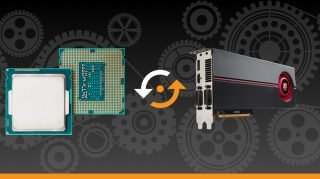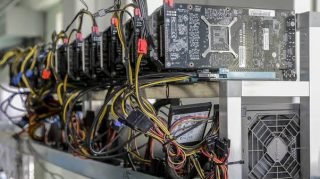Bitcoin is a form of digital currency. There are several cryptocurrencies, including Bitcoin, Ripple, and Monero. With a digital wallet, you may send money to pals or use it for online purchases. You can only use bitcoin online because there are no actual coins or banknotes linked with it. Cryptocurrencies, in contrast to traditional fiat currency, are not the product of sovereign governments. Most of these currencies are valued by how they may be used, and how many “coins” are out there. The process of checking and confirming blockchain transactions is known as cryptocurrency mining. It is also the technique by which new coins are created. In order to make a blockchain network safe, miners use a lot of computing power. Successful and honest miners are rewarded with freshly minted coins and transaction fees.
Cryptocurrency mining is the process of verifying and adding new transactions to the blockchain. In addition to removing old coins from circulation, the process of mining creates new ones. The Bitcoin blockchain relies on mining to function as a distributed ledger. Peer-to-peer networks eliminate the requirement for a central authority to keep track of transactions. In this post, we’ll focus on Bitcoin mining, although the procedure is identical to that of other cryptocurrencies that use the same method.
What is the process of mining?
A memory pool is used to store new blockchain transactions as they are made. A miner’s role is to arrange and verify the legitimacy of these pending transactions. In the blockchain ledger, a block is a single page where several transactions are recorded (along with other data). In further detail, a mining node is in charge of building a candidate block from the memory pool’s unconfirmed transactions. Afterwards, the miner will try to transform this candidate block into a confirmed block. Nevertheless, they must first solve a challenging mathematical problem. Each block that is successfully mined rewards the miner with freshly minted bitcoins plus transaction fees, but this necessitates a significant investment in processing power. Examine the mining procedure in further detail.
First, transactions are hashed.
To begin mining a block, a hash function is used to send all of the outstanding transactions from the memory pool one at a time. A hash is a fixed-size output that is generated each time a piece of data is sent through a hash function. Each transaction has a unique hash, which is used as an identifier in the mining process. The hash of a transaction encapsulates all of the data associated with it. The miner additionally adds a unique transaction, in which they transfer themselves the block reward, in addition to hashing and publishing each transaction separately. The coinbase transaction is what produces new coins and is known as such. Before any other pending transactions may be recorded in a new block, the coinbase transaction is usually recorded first.
This is the second part of the Merkle Tree creation process.
A Merkle Tree is created after every transaction has been hashed and the hashes are arranged in a logical order. To create a Merkle Tree, just pair up the transaction hashes and then hash them. This method is also known as hashing. To form a single hash, the new hash outputs are grouped together into pairs and hashed again. This final hash is sometimes referred to as a root hash (or Merkle root) and represents all of the preceding hashes that were used to construct it.
Finding a valid block header is the third step (block hash)
It is the header of each block that serves as an identification for the individual blocks. Miners use the hash of the previous block and the root hash of their candidate block to build a new block hash when producing a new block. However, in addition to these two components, a random number called nonce must also be included. In order to verify their candidate block, a miner must use a hash function to combine the root hash with the hash of the previous block and a nonce. A legitimate hash is what they’re aiming for. To find a valid hash, miners must repeatedly modify the nonce value, as the root hash and the prior block’s hash are immutables. The result (block hash) must be smaller than a certain target value set by the protocol in order to be considered genuine. Starting with zeros is a requirement in Bitcoin mining. This is known as difficulty in mining.
Once the mined block has been broadcast, the process is complete.
Miners must repeatedly hash the block header with different nonce values, as we’ve just seen. They keep doing this until they find a block hash that works. This block will be published to the network by the miner who discovered it. It is up to each node to determine if the new block and its hash are legitimate before adding it to the network. Each miner then moves on to mining the next block, which becomes a confirmed block. A new round of mining begins when any miners who failed to find a valid hash in the allotted period throw away their candidate blocks.



